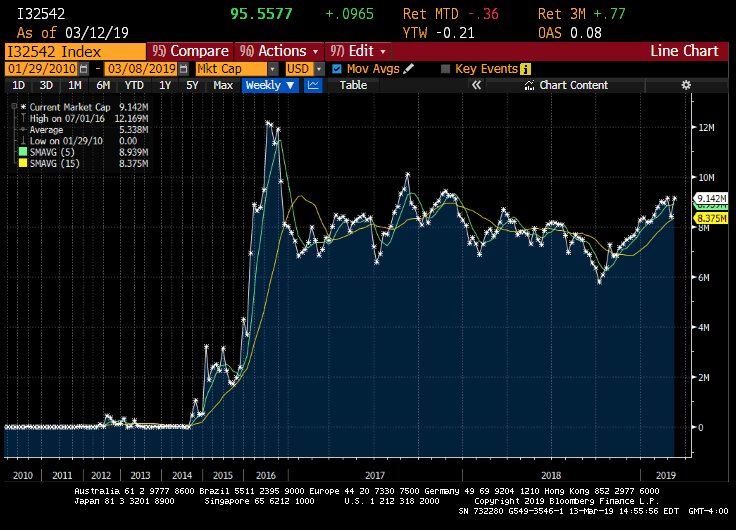You know you have reached true absurdity in the markets when we see negative interest rates on debt and now negative ETF fees! An ETF that pays its investors? That, my friends, is called a Ponzi scheme.
---------
There Is Now A Negative-Fee ETF
Submitted by Philip Grant of Grant's Almost Daily, courtesy of Grant's Interest Rate Observer
Patent pending
A new chapter in financial innovation. From Barron’s yesterday:
- Salt Financial, an exchange-traded fund shop with less than two years under its belt, filed on Tuesday to launch an ETF that will actually pay investors for investing in it, at least at the start. The negative-fee ETF is finally here, making online lender Social Financial or SoFi’s zero-fee ETFs old news.
- Like SoFi’s zero-fee ETFs, Salt’s ETF will effectively zero out the cost and then some via what is called a management fee waiver. Salt’s investment advisor has pledged to add 0.05% [five basis points] of assets to the ETF, but only on the first $100 million in assets or until April 30, 2020. Once the ETF crosses that level or hits that date, it will charge its true fee of 29 basis points.
Negative-fee investment products may be the hot new thing, but a more familiar, if equally confounding, phenomenon persists: Lenders paying borrowers for taking their money. After falling below $6 trillion last year, the Bloomberg Barclays Global Aggregate Negative Yielding Debt Index has seen its market capitalization jump back above $9 trillion. On the authority of Sidney Homer and Richard Sylla, negative interest rates had not been seen in substantial size during 3,000 years of financial history prior to this cycle.
Market cap of the Bloomberg Barclays Global Aggregate Negative Yielding Debt Index.
 |





